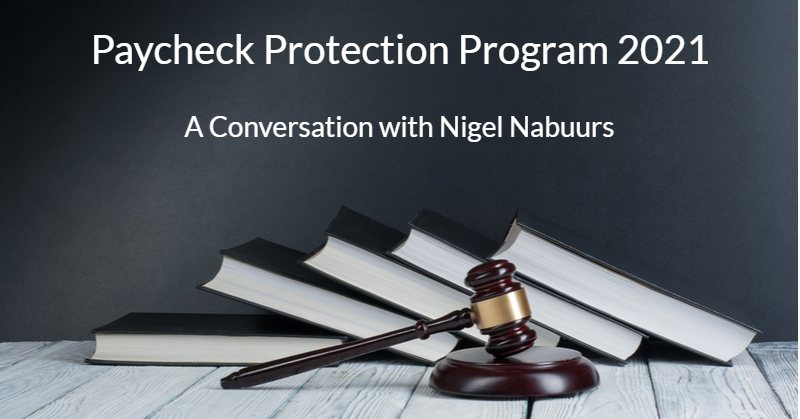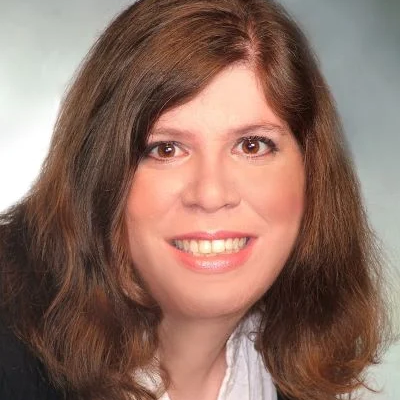The SBA is again accepting and processing applications for PPA loans. Joining us today is Nigel Nabuurs, product manager at Patriot Software Payroll and Accounting, sponsors of our COVID-19 Round Tables.
The COVID-19 Advisor Resource Page on our website contains valuable information for you and your clients in navigating through these difficult waters as well as recordings of previous round tables. And articles about our round tables are being published on the Woodard Report website. There is a five-article series about our January 5 round table with Gene Marks on the Woodard Report website.Joe Woodard: What if there's a startup with zero revenue year after year, but they have wages in a year? I guess a startup didn't have any revenue in 2019, so Gene had answered that definitively. You can't have a reduction in revenue. So therefore, they don't qualify for PPP. Nigel, do you confirm this?
Nigel Nabuurs: Yes, that’s my understanding.
Joe Woodard: Another much smaller division of Woodard sits in that same place. We were dormant for three quarters because I resurrected a division. We spun it up. It has since gone from no employees to four employees, which means that during the pandemic, I pulled four people out of unemployment. I spun up a business, created revenue and contributed to the economy of the country. But I did so against a headwind of the pandemic, increased risk and diminished opportunity. Therefore, I have diminished profits, but I’m not eligible for anything because of that act of economic terrorism, if you want to call it that, because I don’t have anything to compare it to in the previous quarter.
So I wish they would have allowed for some sort of a mid-pandemic startup clause because you know that's helping the economy. This is the caveat on it since that division is starting up. See, it's an investment opportunity. It hasn't turned a profit yet. So I’m actually taking a loss to invest in the middle of the pandemic and pull people out of unemployment. But there’s no provision for people like me. We have a guest whose client turned its restaurant into providing food for shelters at great discounts or for free. Yet they’re not eligible for anything. I know no legislation is perfect. It’s just those little sticking points. It hurts.
Do you have to use the same lender for round two? This is definite: no, you do not. The banks are just a transactional arm of the SBA in order to distribute the funds as approved by Congress. That's all they are.
So can the second PPP loan can be based on the payroll data filed for the first PPP loan? That's not true because your actual payroll may have gone up or down.
Nigel Nabuurs: It actually depends whether you're using 2019 data to calculate your payroll costs for your first loan and then you also want to use that for your second loan. If you're using the same lender and your lender doesn't ask you to provide any additional documentation to substantiate that payroll costs from 2019, then in that case, you wouldn’t have to submit anything. Lenders don't have to require you to submit new documentation. But some of the banks still will because many rules have changed. It can be...
Joe Woodard: A nightmare. And that's in terms of the actual paperwork. My question then would be, what is the responsibility of the business owner? Are they subject to audit? Are we supposed to still go on actual numbers where the presumption is that we have material differences in payroll?
Nigel Nabuurs: If you're using historical 2019 data, theoretically, that shouldn't change between now and then. If it did change because a lot of the rules have changed, then you'll want to submit new documentation for that. But if you're just looking at that data and nothing's changed, then you wouldn't need anything new.
Joe Woodard: That's really good to know. Thank you.
Round Table Guest: I just wanted to add to what Nigel said for 2019 verses 2020, the way that I read the IFR is that you can use whichever provides you the greater PPP. So like Nigel said, if you want to do 2019 just to make it easy because your numbers were about the same, or you just want to get your stuff in faster, you can stay with the current lender and say, “Give me the exact same thing that I already got.” And that's it, or you can resubmit with your 2020 numbers, especially if it's higher and you have the ability to do that.
This also applies for non-employer businesses. So if you are a Schedule C (sole proprietorship) with zero employees, you actually have the ability to use the precise 12-month period before your loan date. If you're filing for a loan on February 15, you can use February 1, 2020 to January 31 of 2021. And the reason you would do that is you had an amazing January 2021. That 12-month period ends up being greater than your 2020 numbers. You have three potential numbers that you can use: 2019 payroll, 2020 payroll, or if you're a non-employer, the precise 12-month period before you file for your loan.
Joe Woodard: I want to get to another guest comment. The rules say to use the entity’s accounting method. The exact way Gene Marks phrased it last week was that he said that your accounting method is determined by your tax return, and you will not have yet filed your 2020 tax return. So this does add a nuance to it.
But if you change your basis to cash for the 2020 return, then file for the PPP loan because you can file through March, then, then your basis for your company may have changed from accrual to cash.
The Journal of Accountancy reported that the IFR defines gross receipts to include all revenue, in whatever form the entity received or accrued it, in accordance with the entity’s acounting methods, from whatever source, including the sales of products or services, interest, dividends, rents, royalties and fees. But if it’s in accordance with the entity’s accounting methods, then we're back to, as defined by them, by either the most recently filed tax return, or as defined by the 2019 return and we'll get clarity on that.
This is an interesting question, Nigel. Gene said last time that if you were operating in 2019 only in the fourth quarter, you can pick any quarter in 2020 for comparison. But if you opened up in the third quarter, can you still compare it to any quarter in 2020? Or do you have to compare quarters in exact order?
Nigel Nabuurs: That's a great question. I believe that is addressed in the IFR.
Joe Woodard: And what if the entity is on a fiscal year that doesn’t end on December 31? How do you compare quarters?
Nigel Nabuurs: I don't think there's anything that says specifically one way or the other. So it probably come down to working with your lender and whatever they determine is reasonable for that.
We have a question: Is there a waiting period between the first and second applications for PPP loans? Essentially, in order to apply for a second loan, you must have used or will use all of the proceeds from your first loan by the date that the second loan will be funded. You can’t apply for both simultaneously and get two disbursements back to back.
.png?width=150&height=63&name=TWRlogo-regmark_blueblack%20(1).png)
.png)










Do you have questions about this article? Email us and let us know > info@woodard.com
Comments: